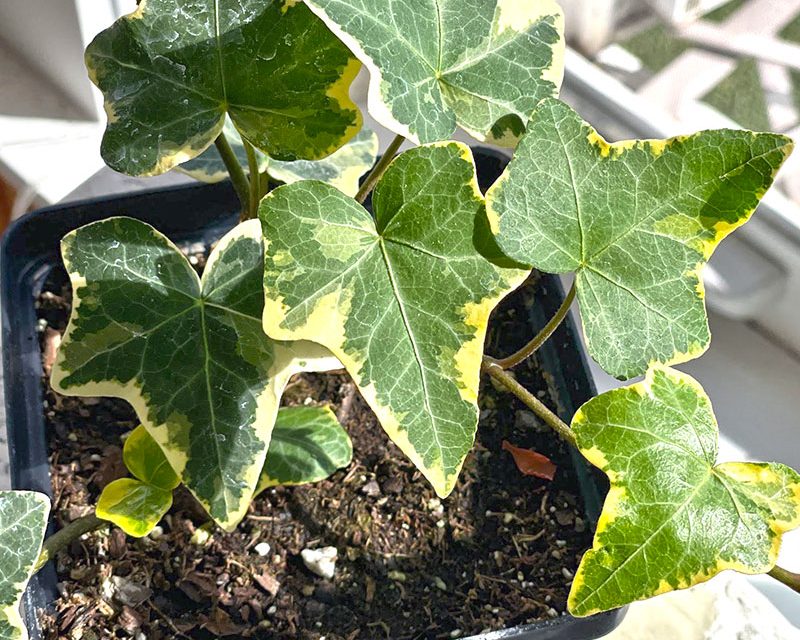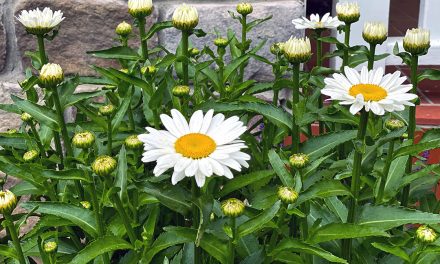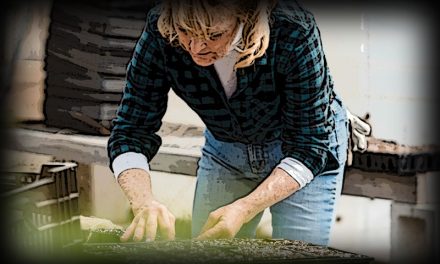Hedera helix ‘Goldchild’: Planting, Growing, and Caring
This English ivy cultivar presents a desirable color variation with its pale gold and yellow variegation. It has a gentle and non-invasive growth habit. The colors are enhanced with sun exposure, but the variegation remains prominent even in partial shade or indirect light.
- Name:ÂGoldchild English ivyÂ(Hedera helix‘Goldchild’)
- Light:ÂIndirect, moderate to bright sunlight
- Mature Size:Â2-3 ft. long
- Leaves:ÂTri-point variegated green leaves with gold edges
This vining plant is delightful and requires minimal care. The Hedera helix variety features lobed leaves with gold margins and variegated green centers. To support its climbing vines, provide a trellis or another structure for the plant to attach to and elevate its foliage.
Optimal Locations for Cultivating Gold Child English Ivy
Proper light exposure and humidity levels play a crucial role in determining the ideal spot for growing English Ivy. This plant thrives in higher humidity levels, especially during its active growth period in the warmer months. Consider placing the plant in a naturally humid environment or utilize a pebble tray to enhance the moisture in the air. While Gold Child English Ivy can tolerate drier conditions in the winter, it is essential to keep an eye on the leaves and adjust the humidity if you notice any signs of drying out or browning along the edges.
Adequate sunlight is essential for the proper growth of English Ivy
This plant thrives in bright, indirect light and shows rapid growth when exposed to sufficient sunlight. When grown indoors, it is important to avoid direct sunlight and instead position the plant near a south-facing window without direct exposure.
Watering Goldchild English Ivy
It is important to keep the soil of Goldchild English Ivy consistently moist. Check the soil regularly and water it when it is slightly damp but mostly dry. Although this plant thrives in moist conditions, it is essential to avoid overwatering to prevent it from becoming soggy. By feeling the soil, you can determine the right time to water the Ivy.
Feed Gold Child English Ivy with a water-soluble fertilizer that is rich in nitrogen. Nitrogen is essential for promoting foliage growth, making nitrogen-rich fertilizers ideal for the decorative leaves of Gold Child. Administer the fertilizer monthly in the spring and summer, but refrain from fertilizing the plant during the fall and winter when growth is minimal.
English Ivy, including the Goldchild variety, is a natural climber that uses its aerial roots to attach itself to nearby supports. To care for this plant, provide a trellis or moss pole and gently secure the vines with twine. Over time, the plant will cling to the support and the twine can be removed. If left without a support, the Gold Child English Ivy will grow along furniture, walls, or anything else within its reach.
Goldchild English Ivy Information:
Light Exposure: Bright Direct Light
Care Requirements: Easy
Watering Requirements: Average – When the top 2 inches of the soil dries out.
Air Purifier: High
Habit: Climbing
Growth Rate: Fast
Mature Height: 10 feet
Mature Spread: 3 feet
Flower Shade/Description: Grown for Foliage
Foliage Type: Variegated
Foliage Color(s): Green, Yellow
Foliage Description: Glossy, Dark-Green and Gold Variegated
Temperature: 60° – 65°F (16° – 18°C)
Humidity: Average (40% – 60%)
Common Name: Goldchild English Ivy
Other Name(s): Common Ivy
Scientific Name: Hedera helix ‘Goldchild’
Here are some steps for propagating Hedera helix ‘Goldchild’ English ivy:
1. Take cuttings
Using a sharp, disinfected knife or scissors, cut 4–6 inch-long stems from healthy vines with vibrant leaves. The cuttings should have at least 3–4 leaf nodes. Pinch off the leaves from the bottom of the cutting.
2. Prepare the cuttings
Dip the cut ends in rooting hormone.
3. Propagate in water
Fill a clear container with water and submerge the cutting. Remove any leaves that touch the water and place the container in indirect sunlight. Change the water every 2–3 days. After 4–6 weeks, roots should start to grow. When the roots are about 2 inches long, repot the cutting in a decorative pot with fresh, well-draining potting soil.
4. Propagate in soil
Alternatively, you can root the cuttings in perlite or coarse sand. Moisten the medium, insert the bottom 1–1.5 inches of the cutting, and cover with a clear plastic bag to reduce water loss. Place the cuttings in a well-lit location with bright indirect light, temperatures in the upper 60s, and 70% humidity
Views: 12








Hello.
Join now and get access to our exclusive offer! Limited time only! Welcome bonus now – $1200 + 300FS Register here: https://monixplay.com/he9f83b35
Progressive jackpots offer life-changing payouts, with prizes often reaching millions. Games like Mega Moolah and Divine Fortune are famous for their massive jackpots, available at top online casinos. Playing at licensed casinos ensures fair jackpot mechanics and secure payouts. At secure-casinos.com, we’ve ranked the top 5 casinos with the biggest jackpots in 2025. Ready to chase millions? Explore our list and spin for your chance to win big. https://discord.gg/RcXhRvKNQu